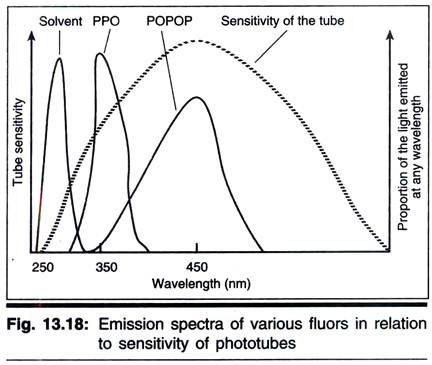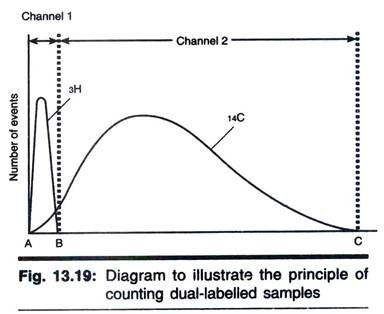ADVERTISEMENTS:
Developments of promoters that are activated in response to a specific chemical are particularly desirable in plant transformation. Utility of chemically inducible promoters are increasingly relevant to the improvement of crops by genetic engineering.
Besides, several biotechnological applications of chemically inducible promoters have been witnessed recently such as construction of a male sterile system, expression of transgene that interfere with regeneration, growth or reproduction and expression of resistance genes to delay adaptive processes of the pathogen.
In manipulation strategy, if low amount of gene product is required, then the expression level of the promoter should be reduced and even close to zero in the absence of the inducer and high expression levels in the presence of the inducer. Further advancement in chemically inducible promoter is its use in combination with tissue specific promoters, so that gene expression is restricted to a specific tissue at a specific time.
ADVERTISEMENTS:
Apart from this the nature of chemical used to induce promoter is highly specific for the target promoter, so that it should neither influence the expression of other genes nor affect other cell function. In addition, efficient uptake through foliar spray and reaching the inducer to all the cells are highly essential.
To fulfill all the above conditions, two different strategies are being followed. In the first strategy plant promoters responsive to a given chemical have been isolated in such a way that this expression system is not specific to transgene alone. Second strategy involves import of regulatory system from other organisms that respond to chemicals that are not interacted by plants.
Certain endogenous plant promoters like PR-la promoter drives the expression of a defence gene, which is normally expressed during pathogen attack. The benzothaidiazole (BTH), chemical inducer of promoter, express PR-la promoter after foliar spray, thus, this inducer is now commercially available in the trade name B ION for the expression of Bacillus thuringiensis 8-endotoxin gene attached with PR-la promoter (Fig. 14.20).
In this experiment, an alternative inducer, isonicotinic acid (INA) was used instead of BTH. Biotechnologically, safeners are agrochemicals that increase the tolerance of plants to herbicides.
Several organisms have developed gene regulatory mechanisms that respond to extreme chemical signals that are not usually exhibited by plants. Antibiotics, for example, affect prokaryotes due to the presence of antibiotic inducible resistance genes, which unlikely affect plant genes.
If the regulatory mechanism involves the binding of only one regulatory protein to specific cis sequences, they can be engineered to use in plants in which expression system that respond to highly specific chemicals.
The above strategy requires deployment and expression of two genes in transgenic plants. These encode the proteins responsible for the regulation of (transcriptional and repressor or activator) gene of interest under the control of suitable target promoter, this strategy is however, more complex than the use of endogenous promoters.
Types of Chemically Inducible Promoters:
1. The Tetracycline-Inducible Promoter:
Control of plant gene expression was first realized through the import of regulatory protein from prokaryotes. The use of bacterial repressor protein TetR, which binds to tet operator DNA sequence only in the absence of its inducer (tetracycline) can manifest the control of plant gene expression. This led to the exploitation of conditional overexpression of several plant genes using an inducer tetracycline antibiotic from outside.
In the tetracycline-inducible expression system, two types of gene constructs are followed. The first repressor protein gene (tetR) is placed under the control of Cam 35 promoter and second gene (gene of interest) is placed under modified target promoter.
Transposon encoded Tet repressor protein of 24 kDa is synthesized under the control of Cam35S promoter. These repressor proteins (tetR) immediately, bind to target promoter (modified), which contains 19 bp tet operator sites.
As a consequence expression of gene of interest is blocked when antibiotic tetracycline is added and it binds to repressor protein and form TetR/tc complex and finally abolishing its DNA binding activity. Under these conditions, repression is relieved, leading to the synthesis of gene product [Fig. 14.21(a)]. This tetracycline inducer system has been known to be involved in the commercial technique of sterilized product.
2. Steroid-Inducible Promoter:
ADVERTISEMENTS:
Certain steroids such as glucocorticoid dexamethasone (dx) can be used as chemical inducers. Glucocorticoid mediated transcription is based on the inhibitory interaction between the heat shock protein HSP90 and the ligand binding domain of the receptor that occurs in the absence of the ligand. In the dx-inducible expression system, the fusion protein, Tf-GR, consisting of a transcription factor as the glucocorticoid binding domains is expressed under the control of Cam35S promoter.
In the absence of steroid dx, the activator (TF-GR) is inactivated by the formation of complex with heat shock protein 90 (HSP90). The binding of dx mediated dissociation from HSP90 and allows binding of the activator protein to a target promoter and transcription is induced [Fig. 14.21(b)]. This system was found to be exploited in the production of male fertile plants.
3. Copper-Inducible Gene Expression:
ADVERTISEMENTS:
Copper is an indispensable element in plant metabolism, but accumulation to high levels leads to toxic effects. Thus, high copper level triggered the expression of copper detoxifying genes. Regulation is mediated by the transcription of ACEI, which binds to cis elements only in presence of copper. This simple mechanism was engineered into the plants. Any target gene can be expressed efficiently when activator was driven by the Cam 35 promoter.
In the absence of copper it cannot bind to its target promoter. Addition of copper leads to binding of copper and induces a conformation change, facilitates the AECI activator protein to bind to specific cis region of the target promoter and transcription form the target promoter is induced. Using copper inducer expression system, cytokinin level was increased in plants.
By placing AECI under the control of the nodule, specific nod 45 promoter antisense constructs of aspartate aminotransferase-P2 was expressed in nodule specific fashion in transgenic lotus plants.
ADVERTISEMENTS:
4. Ethanol-Inducible Gene Expression:
Certain regulatory elements like alCA promoters are strongly inducible by ethanol. This promoter is widely exploited for over expressing proteins in transgenic technology. The transcriptional activator AlcR binds to promoter when cells are grown in the presence of ethanol.
In plants, the system was exploited by placing alcR under the control of the Cam35S promoter. The target promoter containing the TATA box fused to Cam35S promoter and transferred into tabacco plants. Expression of the transgene is now carried out by ethanol-dependent process.
When AlcR is expressed by Cam35S promoter in absence of alcohol, it will not bind to target promoter and no gene expression take place when alcohol appeared in the cells. Conformation changes take place which enables AlcR to bind to specific cis sequences of the target promoter and transcription is induced.



